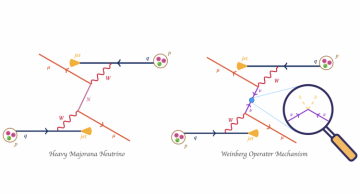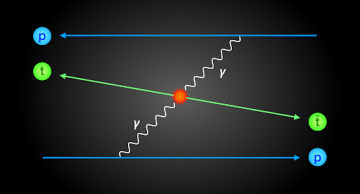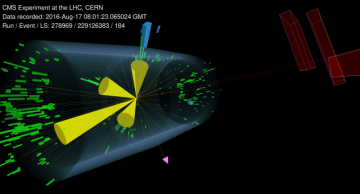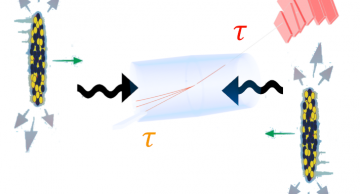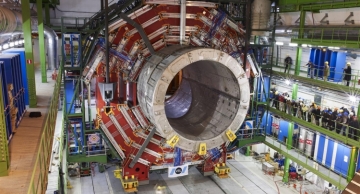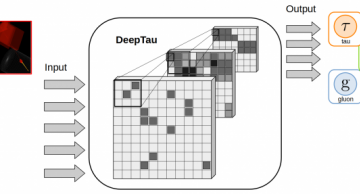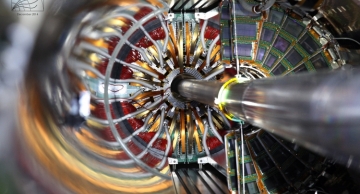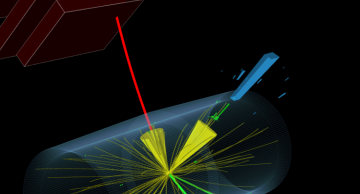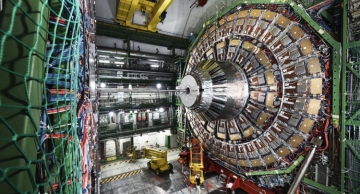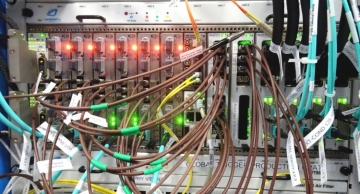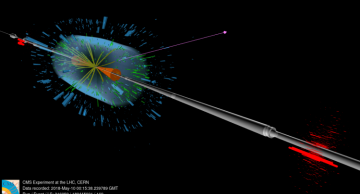Neutrinos (𝝂) are the most intriguing particles in nature. The evolution in our understanding about the characteristics of the neutrinos is also very interesting. The apparent non-conservation of energy in beta decay led Pauli to predict, in 1933, a…
News
|
mazumdar |
Physics
Ask someone what experiments at the CERN-LHC do, they will tell you: ‘You accelerate two protons to very high energy, smash them together and look in great detail at all particles created from the disintegration of the protons.’ etcetera. Well… yes…
|
fblekman |
Physics
Press Statement
The CMS collaboration has substantially improved the precision with which the top quark mass is measured. The latest result, a measurement of the top quark mass of 171.77 ± 0.38 GeV, was presented at CERN last week and estimates the…
|
mazumdar |
Physics
The quantum theory of electromagnetic interaction, called quantum electrodynamics (QED), is the most accurate and successful mathematical description of a large variety of natural phenomena. In numerous experiments over last many decades it has been…
|
Anonymous |
Detector
Running toward the start of Run3 at the Large Hadron Collider (LHC), the CMS experiment completed one of its last and crucial steps: the big solenoid magnet has been powered on to reach the nominal magnetic field of 3.8T on March 4th 2022.
Hidden…
|
mazumdar |
Physics
Tau leptons are the heavy siblings of muons and electrons, being respectively 170 and 3500 times more massive. Leptons are not sensitive to strong interaction. The tau leptons are however so massive (about 1.8 times heavier than the proton) that…
|
ikhalid |
Collaboration
CMS firmly supports the CERN Council statement. We stand in solidarity with the Ukrainian people and all those whose lives are deeply affected by the war. We strongly believe in scientific cooperation as a driver for peace and, in line with…
|
fblekman |
Physics
CMS casts a wide net in the hunt for undiscovered particles
Physicists at the CMS experiment have been searching for new particles in exciting new places. In a recently published paper, they explore the possibility that the Large Hadron Collider (…
|
mazumdar |
Physics
One of the intriguing questions in particle physics is the origin of mass of the fundamental particles. The question we ask is: is the Higgs boson responsible for the masses of all the known particles? The well-established theory of particle physics…
|
ikhalid |
Detector
A few months are left before the start of Run 3 at CERN. With the timely completion of all upgrades planned for Long Shutdown 2 (LS2), in the last weeks the CMS detector has been set in its closed configuration. If this sounds like an ordinary or…
|
ikhalid |
Detector
The challenge of Run3: CMS is preparing to resume its operations for the Run-3 of the Large Hadron Collider (LHC) after a 3-year long shutdown called LS2 (2019-2021). The time of LS2 was used to perform upgrades, which are regularly conducted…
|
mazumdar |
Physics
One of the fundamental puzzles we face today is the dark matter (the dunkle materie, as called by the Swiss physicist Fritz Zwicky back in 1933) in the universe. It is highly abundant (almost five times more than all the objects put together…

